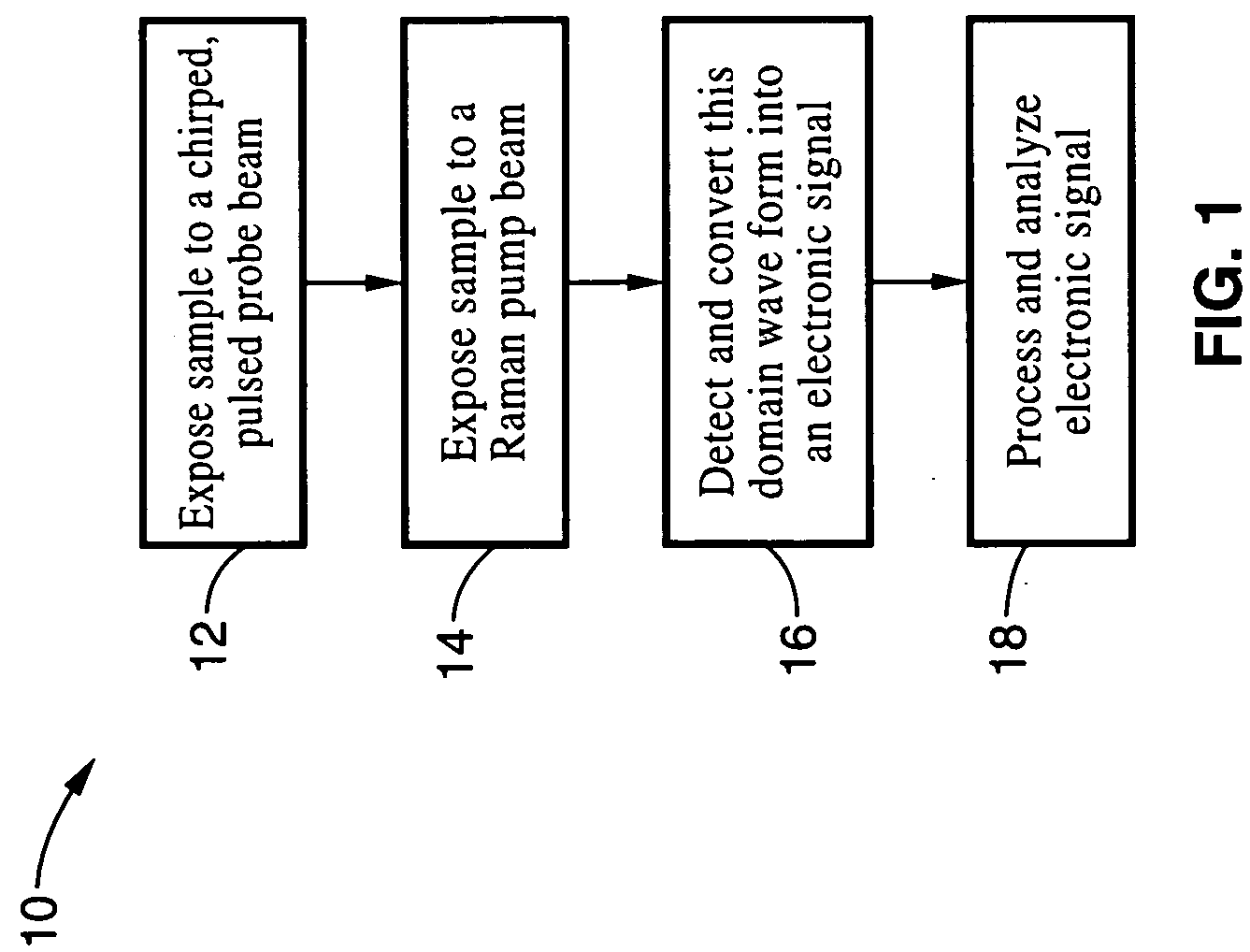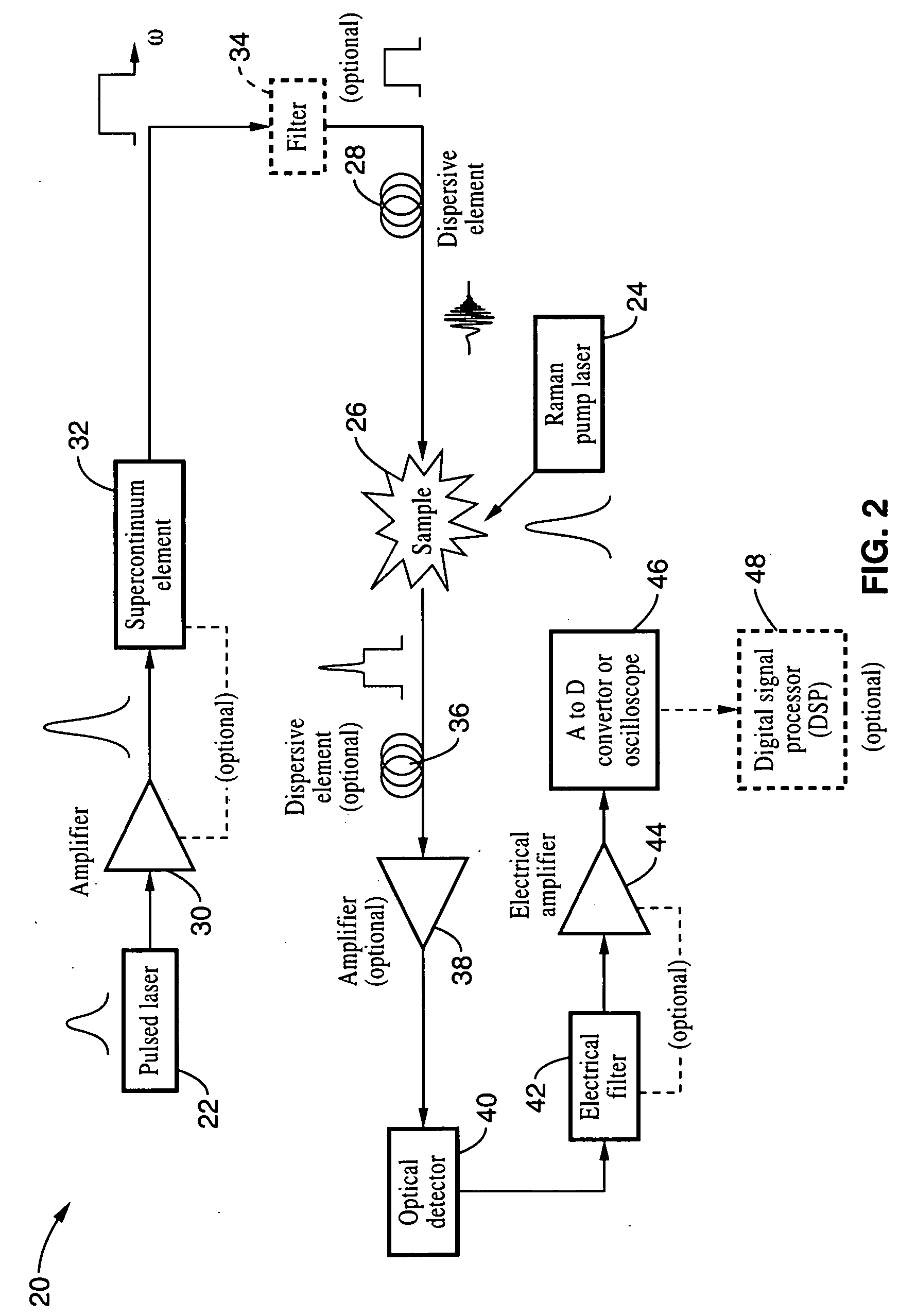Apparatus and method for raman spectroscopy and microscopy with time domain spectral analysis
a technology of raman spectroscopy and microscopy, applied in the field of vibrational spectroscopy, can solve the problems of not being able to repeat the reaction or measur
- Summary
- Abstract
- Description
- Claims
- Application Information
AI Technical Summary
Benefits of technology
Problems solved by technology
Method used
Image
Examples
example 1
[0085]To illustrate the invention, the embodiment shown schematically in FIG. 2 was constructed using a silicon waveguide as a sample. Silicon was selected because the vibrational Raman spectrum of silicon has been well studied using standard techniques and stimulated Raman scattering in silicon has been employed to construct Raman lasers and amplifiers.
[0086]The master oscillator that was used to generate the pump and probe pulses was a mode-locked erbium-doped fiber laser producing near-transform-limited picosecond pulses at approximately 1550 nm with a repetition rate of 25 MHz. The pump pulses were generated by pre-stretching a fraction of the output pulses to approximately 50 ps and then amplifying in a large-mode-area erbium-doped fiber amplifier to a desired level.
[0087]A supercontinuum Stokes probe was generated directly within the gain fiber of a separate specialty erbium-doped fiber amplifier using a portion of the oscillator output as the seed. The supercontinuum pulses w...
example 2
[0092]In order to demonstrate the utility of Raman-post amplification for the present invention and other spectroscopic signals, apparatus was used to amplify weak spectroscopic signals. The detection of weak signals presents a significant challenge in many spectroscopic measurements. This issue is especially important in single-shot applications since it is not possible to use averaging to reduce noise. For example, the use of dispersion to chirp the signal typically weakens the signal because dispersive elements usually have significant loss. Optical amplification of the signal may be necessary to resolve this problem.
[0093]Unfortunately, traditional optical amplifiers are generally only available for a limited number of restricted wavelength bands. On the other hand, Raman amplifiers are not fundamentally tethered to specific wavelengths, but can operate wherever suitable continuous-wave Raman pumps and gain media are available. Distributed Raman amplification is particularly use...
PUM
 Login to View More
Login to View More Abstract
Description
Claims
Application Information
 Login to View More
Login to View More - R&D
- Intellectual Property
- Life Sciences
- Materials
- Tech Scout
- Unparalleled Data Quality
- Higher Quality Content
- 60% Fewer Hallucinations
Browse by: Latest US Patents, China's latest patents, Technical Efficacy Thesaurus, Application Domain, Technology Topic, Popular Technical Reports.
© 2025 PatSnap. All rights reserved.Legal|Privacy policy|Modern Slavery Act Transparency Statement|Sitemap|About US| Contact US: help@patsnap.com



